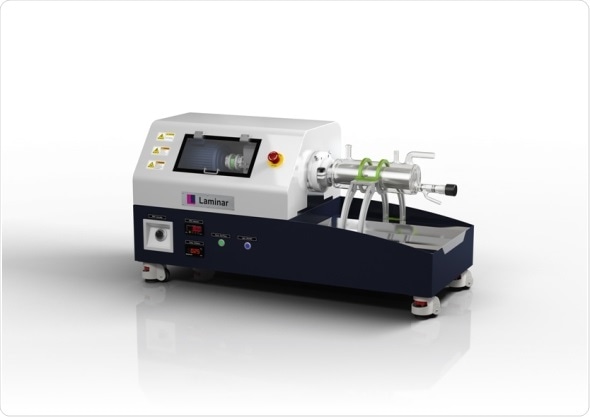The LCTR-Series of Laminar Continuous Flow Chemical Reactors from Analytik set a new standard for high yield synthesis of high-purity, uniform substances based upon the Taylor fluid flow principle.

Laboratory scale Laminar Continuous Flow Reactor system
These patented design chemical reactors use a jacketed cylindrical vessel with a central, rotating agitation bar to produce Taylor flow mixing along the length of the vessel resulting in 3-times faster mass flow transfer compared to tank type reactors. Reagents are pumped at a controlled rate into the vessel and the reaction efficiency is optimized through specific turbulent mixing before the products are collected at the end of the vessel.
The fluid flow in a LCTR system is a uniform Taylor fluid flow without dead-zones, consequently scale-up from 0.02 L to 1000 L can be routinely achieved to produce products with enhanced properties (purity, density, particle distribution, particle size, degree of crystallization etc.) and at higher yields compared to traditional reactors. Combining powerful agitation with uniform Taylor fluid flow in an LCTR system allows reaction times to be significantly reduced and productivity enhanced. Precise temperature control is achieved using a small diameter pipe design to facilitate thermal transfer and to maintain control and stability using a dual jacket.
Each system includes a real-time monitoring system enabling you to follow the progress of your reaction in real time, and if a problem occurs, you can stop the process automatically. The LCTR-Series has also been designed to be simple to operate to enable users to quickly gain the full benefits of the powerful chemical reactor.
Applications that have already benefited from LCTR systems include pharmaceutical API crystallization, amino acid purification, graphene oxide manufacture, Lithium ion matter material production, recrystallization to increase purity and OLED material production.